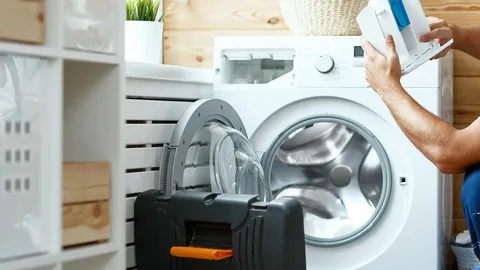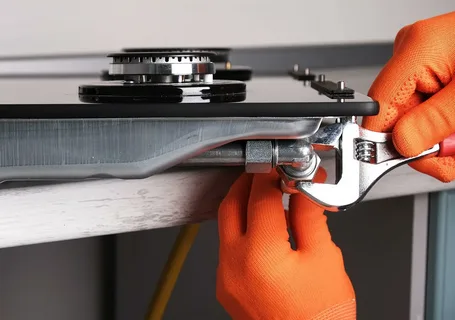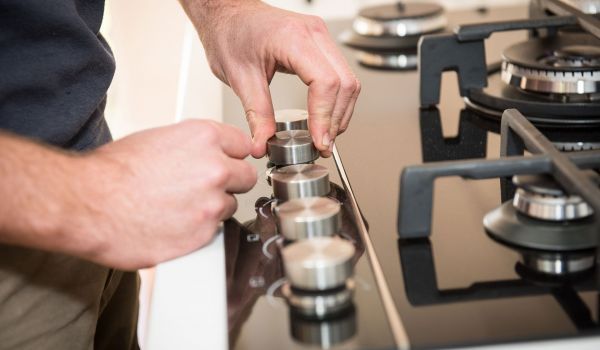Discover common washer problems and how to fix them with DIY tips. Learn troubleshooting techniques for washing machines to keep your appliance running smoothly.
Washing machines are essential appliances in our homes, making laundry tasks easier and more efficient. However, like any other appliance, they can experience issues over time. Understanding common washer problems can save you time, money, and frustration. This guide will provide you with essential washer repair tips and insights into maintaining your washing machine effectively.
If you encounter washer problems beyond DIY fixes, consider professional washer repair services. These experts can diagnose and resolve complex issues swiftly, ensuring your appliance operates efficiently.
Common Washer Problems
Washer Not Spinning
One of the most common washer problems is when the washer fails to spin. This issue can be caused by various factors, including a broken belt, motor issues, or problems with the lid switch. To troubleshoot this problem, first, check if the lid switch is functioning correctly. If the lid switch is faulty, it may need to be replaced. Additionally, inspect the drive belt for any signs of wear and tear. Replacing a broken belt can often resolve the spinning issue.Washer Leaking Water
Water leakage is another frequent problem that homeowners encounter with their washers. This issue can be caused by loose hoses, a damaged door seal, or a faulty water pump. Start by checking the hoses at the back of the machine to ensure they are securely connected. If the hoses are intact, inspect the door seal for any cracks or damage. Replacing a damaged door seal can prevent water from leaking out during the wash cycle. If the water pump is malfunctioning, it may need to be replaced by a professional.Washer Making Noise
A noisy washer can be disruptive and indicate underlying problems. Common causes of washing machine noise issues include loose drum bearings, worn-out belts, or objects trapped in the drum. Begin by checking the drum for any foreign objects that might be causing the noise. If you find nothing, inspect the drum bearings and belts for signs of wear. Replacing worn-out belts or bearings can significantly reduce noise levels.Washer Error Codes
Modern washers are equipped with error codes that help diagnose specific problems. These codes can be confusing, but they provide valuable information about the issue at hand. Consult your washer’s manual to interpret the error codes accurately. Common error codes may indicate problems such as drainage issues, door latch problems, or motor malfunctions. Understanding these codes can guide you in taking appropriate steps to resolve the issues.Washer Won’t Drain
If your washer won’t drain, it can leave you with a load of soggy clothes. This problem is often caused by a clogged drain hose or a malfunctioning pump. Begin by checking the drain hose for any obstructions. Remove any debris or lint that may be blocking the hose. If the hose is clear, inspect the pump for any signs of damage or clogs. Cleaning or replacing the pump can restore proper drainage.Washer Repair Costs
When faced with washer repair issues, understanding the potential costs involved can help you make informed decisions. Minor repairs, such as replacing a belt or fixing a hose, are relatively inexpensive. However, more complex issues, such as motor or pump replacements, can be costly. It’s essential to weigh the repair costs against the cost of purchasing a new washer. In some cases, investing in a new machine may be more cost-effective in the long run.Washer Repair Services Near Me
If you’re not comfortable tackling washer repairs on your own, seeking professional help is a viable option. Searching for “washer repair services near me” can connect you with qualified technicians in your area. Professional repair services can accurately diagnose and fix issues, ensuring your washer operates efficiently. Before hiring a repair service, check reviews and ask for recommendations to find reliable technicians.DIY Washer Repair Tips
While some washer repairs require professional assistance, many common problems can be fixed with a bit of DIY know-how. Here are some DIY washer repair tips to help you troubleshoot and resolve issues:How to Fix a Washing Machine
- Identify the Problem: Start by identifying the specific issue with your washer. Is it not spinning, leaking, or making noise? Understanding the problem is the first step in finding a solution.
- Gather Tools and Parts: Depending on the issue, you may need specific tools and replacement parts. Having a basic toolkit and access to common washer parts can make the repair process smoother.
- Consult the Manual: Your washer’s manual contains valuable information about troubleshooting and repairs. Refer to the manual for guidance on resolving specific issues.
- Disconnect Power and Water: Before starting any repair, ensure the washer is unplugged, and the water supply is turned off. Safety should always be a priority.
- Inspect and Diagnose: Carefully inspect the washer components related to the problem. Check for loose connections, damaged parts, or obstructions.
- Replace Faulty Parts: If you identify any faulty parts, such as a worn-out belt or a damaged seal, replace them with new ones. Ensure the replacement parts are compatible with your washer model.
- Test the Washer: After making the necessary repairs, test the washer to ensure the problem is resolved. Run a small load of laundry to confirm proper operation.
Preventative Maintenance for Washers
Regular maintenance can extend the lifespan of your washer and prevent common problems. Here are some preventative maintenance tips:- Clean the Washer: Regularly clean the drum, door seal, and detergent dispenser to prevent mold and mildew buildup. Use a mixture of water and vinegar for effective cleaning.
- Check Hoses and Connections: Inspect the hoses and connections for any signs of wear or leaks. Replace damaged hoses to prevent water leakage.
- Balance the Load: Avoid overloading the washer, as this can strain the motor and drum bearings. Distribute the load evenly to ensure smooth operation.
- Use the Right Detergent: Use high-efficiency (HE) detergent for front-loading washers to prevent excessive suds and buildup.
- Run Cleaning Cycles: Periodically run cleaning cycles with an empty washer to remove residue and maintain optimal performance.
FAQs About Washer Repair
How to Clean a Washer
Cleaning your washer regularly is essential for maintaining its efficiency. To clean a washer, follow these steps:- Run a Cleaning Cycle: Use a washer cleaner or a mixture of water and vinegar to run a cleaning cycle with an empty drum.
- Wipe the Drum and Door Seal: After the cleaning cycle, wipe down the drum and door seal with a damp cloth to remove any remaining residue.
- Clean the Detergent Dispenser: Remove the detergent dispenser and clean it thoroughly to prevent buildup.
Best Washer Repair Tools
Having the right tools can make washer repairs easier. Some essential washer repair tools include:- Screwdrivers: A set of Phillips and flathead screwdrivers for removing screws.
- Pliers: Needle-nose pliers for gripping and removing small parts.
- Wrench Set: Adjustable wrenches for loosening and tightening bolts.
- Multimeter: For testing electrical components and diagnosing faults.
Top Washer Repair Mistakes
Avoiding common washer repair mistakes can save you time and frustration. Here are some mistakes to watch out for:- Skipping Safety Precautions: Always unplug the washer and turn off the water supply before starting repairs.
- Using Incorrect Parts: Ensure replacement parts are compatible with your washer model to avoid further damage.
- Ignoring the Manual: Consult your washer’s manual for guidance on troubleshooting and repairs.
- Overloading the Washer: Avoid overloading the washer, as this can strain the motor and drum bearings.



